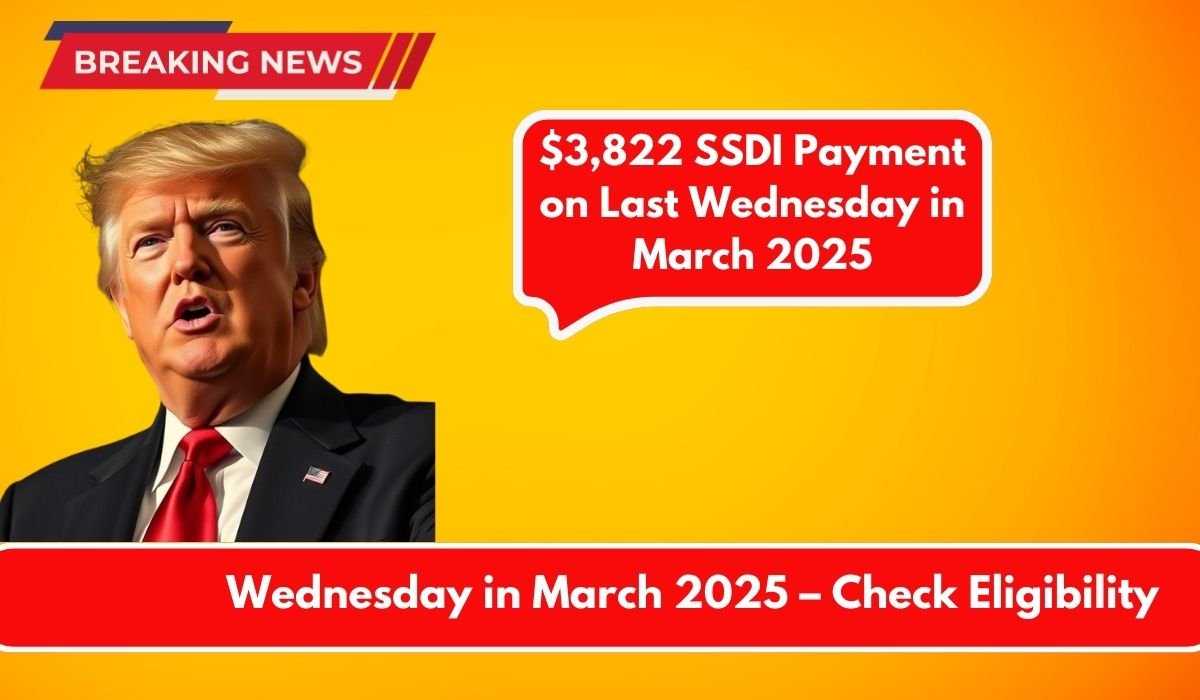Hey there! Let’s talk about the Social Security Disability Insurance (SSDI) payment of $3,822, set to be distributed on the last Wednesday of March 2025. If you’re wondering whether you qualify and what this payment means for you, stick around—I’ve got you covered.
Understanding the $3,822 SSDI Payment
In 2025, SSDI benefits received a 2.5% cost-of-living adjustment (COLA) to help keep up with inflation. This increase means that the maximum monthly SSDI benefit has gone up to $4,018. However, not everyone receives the maximum amount. Your actual benefit depends on factors such as your earnings history and the age at which you start receiving benefits.
Who Gets Paid on the Last Wednesday?
SSDI payments are scheduled based on your birth date:
- Born between the 1st and 10th: Paid on the second Wednesday of the month.
- Born between the 11th and 20th: Paid on the third Wednesday.
- Born between the 21st and 31st: Paid on the fourth Wednesday.
So, if your birthday falls between the 21st and 31st, you can expect your SSDI payment on March 26, 2025.
Are You Eligible for the $3,822 Payment?
Receiving the maximum SSDI benefit isn’t automatic. The amount you receive depends on your work history and how much you’ve contributed to Social Security. To qualify for SSDI, you generally need:
- Work Credits: You earn these by working and paying Social Security taxes. The number required depends on your age and employment history.
- Disability Status: You must have a medical condition that meets the Social Security Administration’s definition of disability, meaning it prevents substantial gainful activity and is expected to last at least 12 months or result in death.
The average SSDI benefit in 2025 is around $1,580 per month after the COLA adjustment. While some people will receive the maximum $3,822, most will see a lower amount based on their earnings history.
What If You Don’t Receive Your Payment?
If March 26 comes and goes without your SSDI deposit, don’t panic. First, wait three business days, as minor delays can happen. If the payment still hasn’t arrived, check your bank account details and contact the Social Security Administration (SSA) for assistance.
Conclusion
Understanding SSDI payments can be overwhelming, but knowing the schedule and eligibility criteria helps you plan better. The $3,822 figure represents the maximum benefit, and your actual payment may differ. Stay informed and reach out to the SSA if you have any concerns about your benefits.
FAQs
How is the SSDI payment amount determined?
Your SSDI benefit is based on your average lifetime earnings before your disability began. Higher earnings typically lead to higher benefits, up to the maximum limit.
Can I receive SSDI and work at the same time?
Yes, but there are income limits. In 2025, earning more than $1,620 per month may affect your benefits. The SSA offers programs like the Trial Work Period to help beneficiaries return to work without immediately losing benefits.
What should I do if my SSDI payment is late?
Wait three business days after the expected payment date. If it still hasn’t arrived, check your bank details and contact the SSA for assistance.
Will SSDI benefits increase every year?
Not necessarily. COLA adjustments depend on inflation rates and are determined annually. For 2025, there was a 2.5% increase.
How can I check my SSDI payment status?
You can create a “my Social Security” account on the SSA website to view your benefit details, payment history, and manage your personal information.



